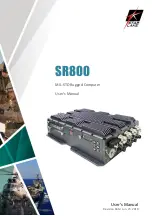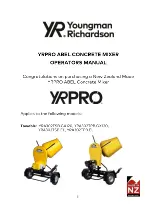
Operating Instructions (compact)
1.8 Connecting
SIMATIC HMI IPC577C
Operating Instructions (Compact), 05/2009, A5E02368077-01
23
1.8.4
Connecting the equipotential bonding circuit
A low-impedance earth connection ensures that interference signals generated by external
power supply cables, signal cables or cables to the peripherals are safely discharged to
earth.
The equipotential bonding connection of the device is located at the connection elements of
the computer unit and is identified by the following symbol:
Figure 1-7
Equipotential bonding
Connecting the equipotential bonding circuit
Required tools for connection of equipotential bonding: TORX T20 screwdriver
Steps for connecting the equipotential bonding
1. Connect the equipotential bonding terminal ①
(M4 thread) on the device (large surface, large-
area contact) with the central grounding point
of the control cabinet.
The minimum conductor cross-section may not
amount to less than 5 mm
2
.
Avoiding differences in potential
Differences in potential arise between separated system parts, which in some cases leads to
high equalization currents. This situation may arise if the cable shielding is terminated at
both ends and grounded at different system parts. Potential differences can be caused, for
example, by different power inputs.
Reduce the differences in potential by laying the equipotential bonding cables in such a way
that the affected electronic components function properly. Observe with the following
guidelines when setting up equipotential bonding:
● The lower the impedance of the equipotential bonding cable, the greater the effectiveness
of the equipotential bonding.
● When two system parts are connected by means of a shielded signal cable, and their
shields are both connected to the ground or protected conductor, the following must be
observed: The impedance of the additional equipotential bonding cable amounts to 10%
of the shield impedance, at the most.
● Make sure that the equipotential bonding cable cross section is selected to accommodate
the maximum equalization current. The equipotential bonding conductor cross-section
that has proven best in practice is 16 mm
2
.














































